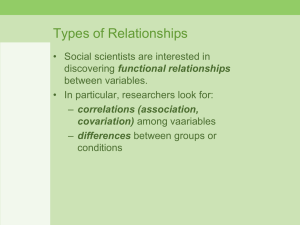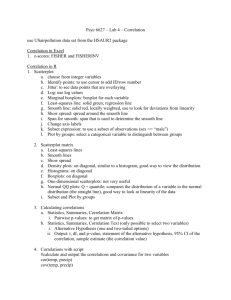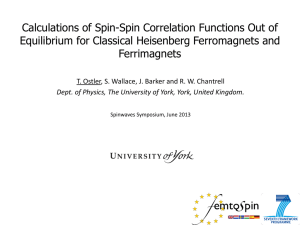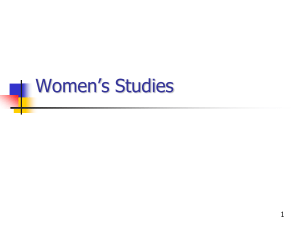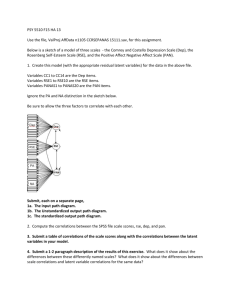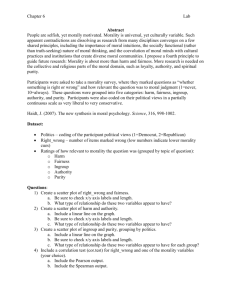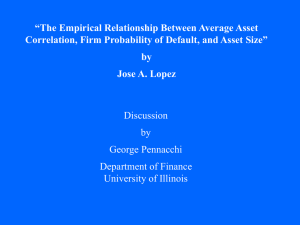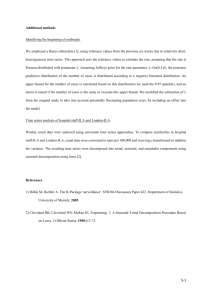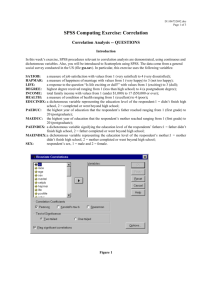Annex B - Comparison between experimental data and models
advertisement
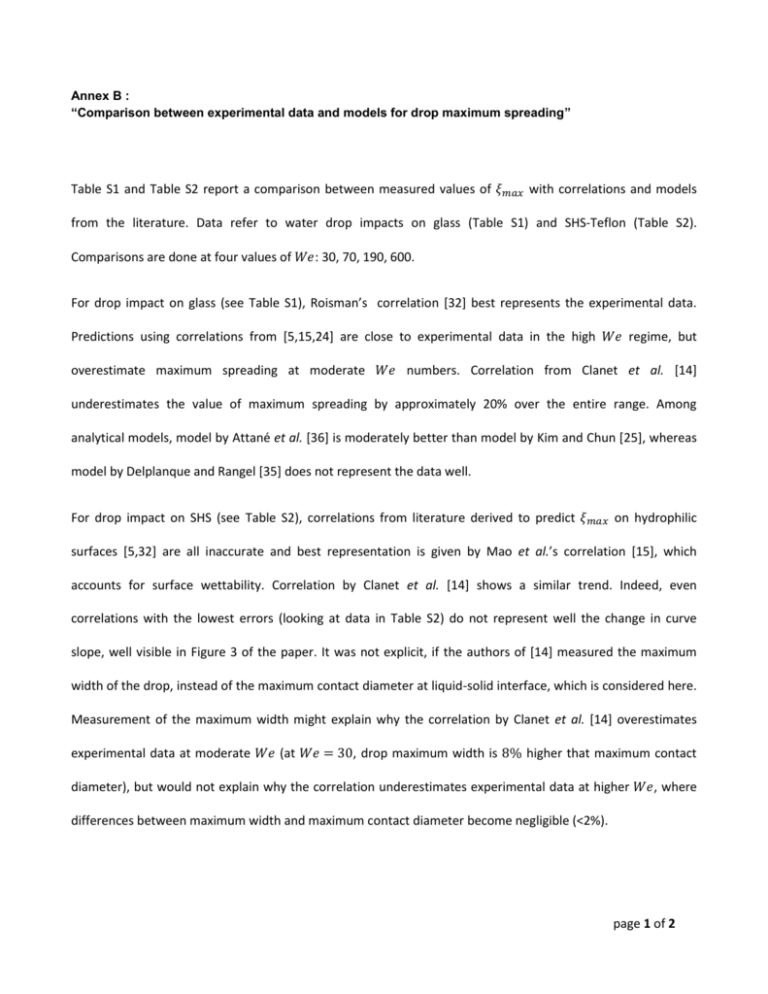
Annex B : “Comparison between experimental data and models for drop maximum spreading” Table S1 and Table S2 report a comparison between measured values of 𝜉𝑚𝑎𝑥 with correlations and models from the literature. Data refer to water drop impacts on glass (Table S1) and SHS-Teflon (Table S2). Comparisons are done at four values of 𝑊𝑒: 30, 70, 190, 600. For drop impact on glass (see Table S1), Roisman’s correlation [32] best represents the experimental data. Predictions using correlations from [5,15,24] are close to experimental data in the high 𝑊𝑒 regime, but overestimate maximum spreading at moderate 𝑊𝑒 numbers. Correlation from Clanet et al. [14] underestimates the value of maximum spreading by approximately 20% over the entire range. Among analytical models, model by Attané et al. [36] is moderately better than model by Kim and Chun [25], whereas model by Delplanque and Rangel [35] does not represent the data well. For drop impact on SHS (see Table S2), correlations from literature derived to predict 𝜉𝑚𝑎𝑥 on hydrophilic surfaces [5,32] are all inaccurate and best representation is given by Mao et al.’s correlation [15], which accounts for surface wettability. Correlation by Clanet et al. [14] shows a similar trend. Indeed, even correlations with the lowest errors (looking at data in Table S2) do not represent well the change in curve slope, well visible in Figure 3 of the paper. It was not explicit, if the authors of [14] measured the maximum width of the drop, instead of the maximum contact diameter at liquid-solid interface, which is considered here. Measurement of the maximum width might explain why the correlation by Clanet et al. [14] overestimates experimental data at moderate 𝑊𝑒 (at 𝑊𝑒 = 30, drop maximum width is 8% higher that maximum contact diameter), but would not explain why the correlation underestimates experimental data at higher 𝑊𝑒, where differences between maximum width and maximum contact diameter become negligible (<2%). page 1 of 2 Table S1: Comparison between measured values of maximum spread factor, 𝜉𝑚𝑎𝑥 , for impacts on glass (this study) and values predicted by correlations and models in the literature. Differences are expressed as percentages. We exp. value 𝜉𝑚𝑎𝑥 Scheller and Bousfield (1995) Roisman (2009) Clanet et al. (2004) Pasandideh-Fard et al. (1996) Mao et al. (1997) Delplanque and Rangel (1997) Kim and Chun (2001) Attané et al. (2007) 30 2.6 70 3.3 190 4.2 600 5.1 +16% -4% -19% +39% +21% +32% +9% +10% +5% -1% -21% +20% +8% +37% -2% +3% -2% -1% -19% +7% +1% +40% -8% +1% -3% -2% -13% +2% 0% +39% -9% +5% Table S2: Comparison between measured values of maximum spread factor, 𝜉𝑚𝑎𝑥 , for impacts on SHS-Teflon (this study) and values predicted by correlations and models in the literature. Differences are expressed as percentages. We exp. value 𝜉𝑚𝑎𝑥 Scheller and Bousfield (1995) Roisman (2009) Clanet et al. (2004) Pasandideh-Fard et al. (1996) Mao et al. (1997) Delplanque and Rangel (1997) Kim and Chun (2001) Attané et al. (2007) 30 1.9 70 2.6 190 3.7 600 4.9 +62% +34% +13% +22% +11% +84% +16% +11% +33% +26% 0% +9% +2% +74% +3% +1% +12% +12% -9% +1% -4% +59% -7% -4% +1% +2% -9% -4% -5% +45% -11% -2% page 2 of 2
